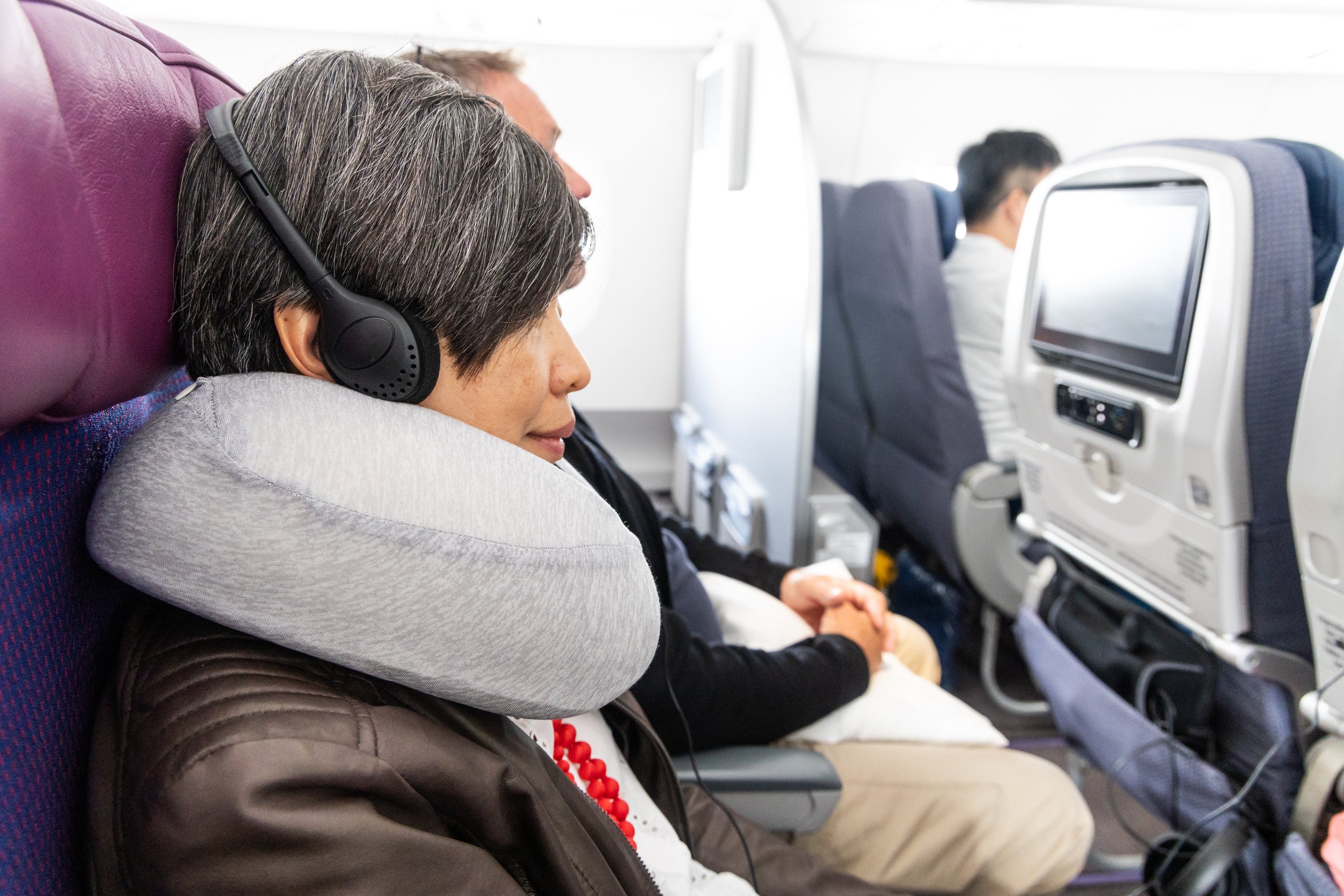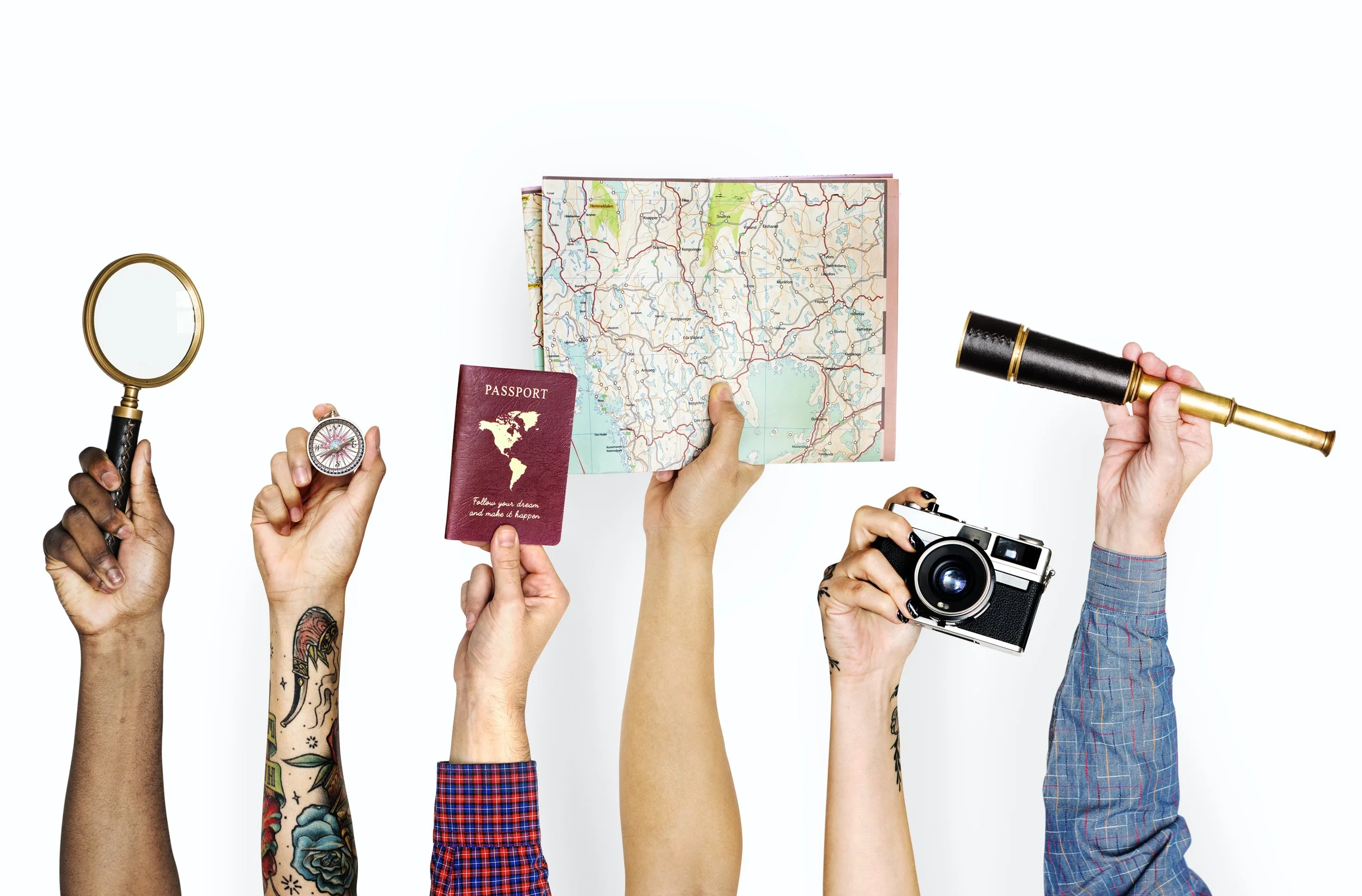It's almost summer, and for many of us that means a vacation is on the horizon. Long hours sitting on planes, trains, or cars, combined with unfamiliar sleeping arrangements can wreak havoc on your neck, and your fun. With a few simple strategies and some planning, you can optimize your chances for pain-free adventures.
Understanding neck pain: A biomechanical breakdown
The human neck is a true marvel of engineering. A complex network of muscles, ligaments, and bones support your head and allow a wide range of motion. However, its design also makes it susceptible to strain and injury. The average human head weighs between 10-12 pounds, about as much as a bowling ball.
Prolonged sitting in a flexed position, like hunching over a phone or laptop, can tighten the muscles in the front of your neck as they strain to hold that bowling ball upright. It can also stress the ligaments and joints in the back of your neck, potentially leading to pain, stiffness and misaligned vertebrae. Other things that can strain and injure your neck include awkward sleeping positions, temperature, and sudden movements.
Strategize to minimize pain
Mindful balance
When it comes to body mechanics, try to avoid carrying more weight on one side of your body, or more weight in the back vs. front. In the same vein, try to avoid postures that lean more to one side, or front or back. Keeping your own weight centered on both legs, your head centered atop your spine, and anything you carry distributed evenly will go a long way in preventing injury.
Pack Light, Embrace the Carry-On
Avoid overloading your luggage. Opt for a lightweight suitcase with wheels, or consider using a backpack with padded shoulder straps. Remember, a heavier bag translates to more strain on your neck and back. If your destination allows, pack light enough to carry on your belongings. This eliminates the need to wrestle with heavy suitcases and maneuver them through crowded airports.
Maintain good posture, Take movement breaks
Sit up tall with your shoulders back and relaxed, and your feet flat on the floor. Get up and walk around every hour on long journeys to prevent muscle stiffness.
Hydrate, Limit Screen Time
Dehydration can contribute to muscle tension. Drink plenty of water throughout your trip. While staring at your phone or tablet for hours might seem like a good way to pass the time, it can lead to neck strain. Set time limits for screen usage and incorporate breaks for stretches and movement. Consider alternating with audiobooks and podcasts. When you do choose to use screens, try to position them so that your head is in a more neutral position.
And finally, consider investing in some travel equipment. Here are some ideas.
Essential equipment for neck support
A few key items can make a significant difference in keeping your neck happy while traveling:
Travel Pillow: A well-designed travel pillow supports the natural curve of your neck. There are a lot of options, from memory foam to inflatable. Our neighbor Emma doesn’t go anywhere without her buckwheat pillow because it can be molded into the exact shape she needs. Find what works best for you.
Heat/cold therapy packs: A portable heat pack can help relax tight muscles, while a cold pack can reduce inflammation after a long journey. In a pinch, you can fill one of your socks with rice or another grain (just maybe not popcorn!), tie a knot in the end, and heat it in a microwave in 30-second increments until it's the right temperature. You can also put these in the freezer and use them like an ice pack.
Two tennis balls in a sock: Shove two tennis balls (or lacrosse if you want firmer) into the toe of a sock, stacked atop each other. Knot it off. You now have a massage tool that you can place behind you in any seat, against a wall, or underneath you on the floor or bed. Simply position the two balls on either side of your spine between you and the floor/wall/seat/bed, and gently relax into the pressure. For the neck specifically, this is great while relaxing on the floor or bed. The balls should not dig into your spine, and if it causes pain, you should immediately stop.
Sleeping soundly on the road
We've already covered the importance of making sure you have the right pillow for your neck. In addition, both sleeping position and room temperature can cause a sore neck.
Avoid sleeping on your stomach: This position can strain your neck. Opt for sleeping on your back or side with a pillow between your knees for better spinal alignment.
Adjust the bed temperature: A cool room promotes better sleep, but avoid directing air conditioning vents directly towards your neck. Similarly, if you're traveling in cooler temperatures, it helps to keep a scarf around your neck. Cold muscles are more prone to injury.
We hope these tips can help keep you enjoying the fun of travel. If neck pain is a common issue for you, or if you’re prone to neck problems when you travel, consider coming in to see us before you go. A pre-travel chiropractic session could be just the ticket.
Come visit us at Parkside
Come see our expert team at Parkside Clinic where we tailor our care to your specific condition and tap into your body’s natural healing ability. Make an appointment, or if you have any questions, contact us.





